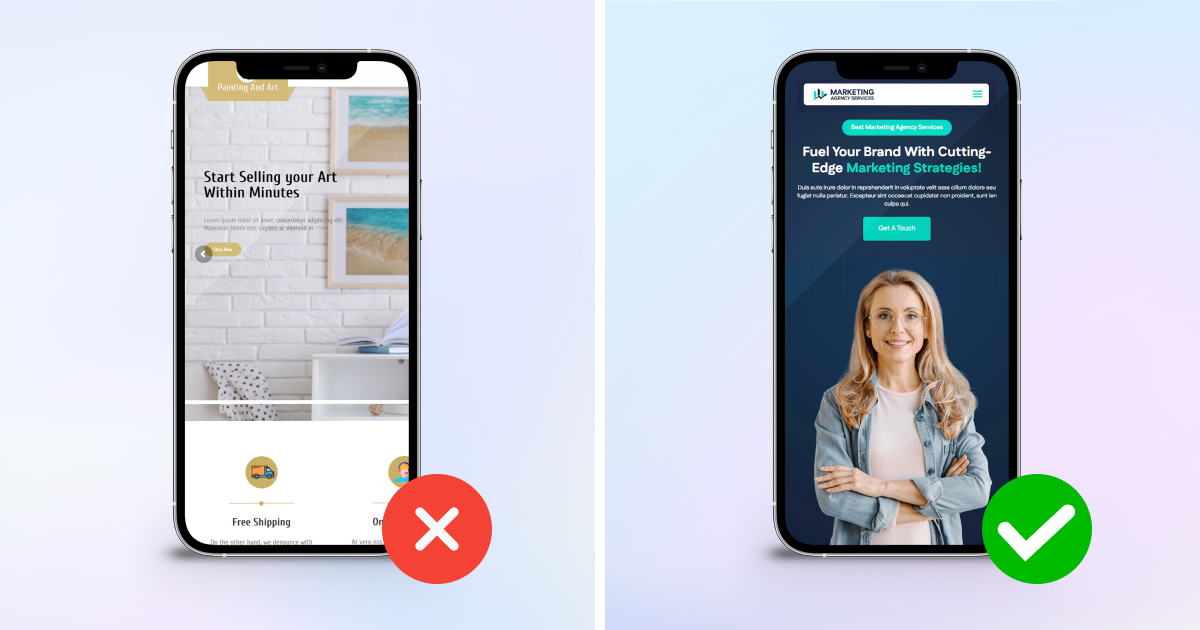Common Mistakes When Choosing a Website Template and How to Avoid Them
Choosing the right website template is one of the most critical steps in creating a professional and successful online presence. Your template serves as the foundation of your website, affecting both how it looks and how it functions. A poorly chosen template can result in slow loading times, frustrated visitors, and a website that fails to represent your brand effectively. Unfortunately, many website owners make avoidable mistakes during the selection process. Template Bundle offers a wide range of templates designed to help businesses, freelancers, and creative professionals avoid these pitfalls.
In this blog, we will explore the most common mistakes people make when selecting website templates and provide actionable tips on how to avoid them. By understanding these mistakes, you can choose a template that not only looks great but also performs flawlessly and supports your business goals.
1. Not Considering Your Website’s Purpose

One of the most common errors is choosing a template based solely on its visual appeal rather than considering the type of website you need. For example, an eCommerce store requires a template that includes product galleries, shopping cart integration, and secure checkout features. On the other hand, a portfolio website needs templates with galleries, sliders, and testimonial sections to showcase creative work effectively.
When a template does not align with your website’s purpose, you may end up spending extra hours customizing it or compromising on functionality. This can delay your website launch and even lead to an unsatisfactory user experience.
Tip: Before selecting a template, clearly define your website’s goals. Ask yourself:
- What is the main purpose of my website?
- Who is my target audience?
- What features are absolutely necessary for my website type?
Template Bundle offers a variety of categories like eCommerce, blogs, portfolios, business, and more. Each template is designed with specific purposes in mind, making it easier to find one that fits your exact needs.
Example: A fitness studio looking to showcase classes and schedules would benefit more from a “Gym & Fitness” template rather than a generic business template. Similarly, an online boutique would require an eCommerce template with product filters and checkout options.
2. Ignoring Mobile Responsiveness

Mobile traffic now accounts for more than half of all website visits globally. A website that looks perfect on a desktop may break or appear cluttered on smartphones and tablets if the template is not responsive. Ignoring mobile responsiveness can lead to poor user experience, high bounce rates, and even lower search engine rankings.
Tip: Always test a template demo on multiple devices, including smartphones and tablets, before making a purchase. Check how menus, images, and text adjust on smaller screens.
Template Bundle templates are fully responsive, ensuring that your website looks professional across all devices. Responsive templates also contribute positively to SEO, as search engines prioritize mobile-friendly websites.
Example: Imagine a travel blog that shares vibrant images of destinations. On a desktop, the gallery looks stunning. But on a mobile device, if the images are not properly optimized, the page may load slowly or the layout may break, frustrating readers. Choosing a responsive template from Template Bundle solves this problem and ensures your audience enjoys a seamless browsing experience.
3. Overlooking SEO-Friendly Features

Even the most visually appealing template can fail if it is not optimized for search engines. Many beginners choose templates based on design alone and neglect technical aspects like clean code, fast loading times, and SEO-friendly structure. Poorly coded templates can affect website speed, indexing, and search engine rankings, making it harder for potential visitors to find your site.
Tip: Look for templates with the following SEO features:
- Clean and organized HTML/CSS structure
- Fast loading speeds
- Schema markup for rich results
- Optimized heading hierarchy (H1, H2, H3)
- Compatibility with SEO plugins (for WordPress templates)
Template Bundle ensures that all templates are designed with SEO in mind, combining aesthetic appeal with performance.
Example: A local bakery creating an online store might choose a visually striking template. If it lacks proper SEO optimization, potential customers searching for “fresh cakes near me” may never find the website. Selecting an SEO-friendly template increases visibility and drives organic traffic to your site.
4. Choosing Style Over Functionality

Many people fall into the trap of selecting a template based solely on its design or animation effects.While aesthetics are important, functionality is crucial for delivering a great user experience. A template must support the features that your website needs, such as contact forms, booking systems, eCommerce integrations, or blog sections.
Choosing style over functionality can result in a website that looks good but doesn’t meet your business or user needs. You may end up adding unnecessary plugins or custom code to make it work, which can slow down your website and create maintenance challenges.
Tip: Make a checklist of essential features before selecting a template. Ensure the template supports these features out of the box.
Example: A photography portfolio requires gallery layouts and lightbox functionality. A business consulting website needs sections for services, client testimonials, and case studies. Template Bundle offers templates that balance style and function, allowing you to create a professional-looking website without sacrificing usability
5. Failing to Check Template Support and Updates

Many users overlook the importance of ongoing support and regular template updates. Templates that are not maintained can face compatibility issues with newer versions of WordPress, plugins, or modern web technologies. Lack of support can leave you stranded if you encounter bugs or need help with customization.
Tip: Always choose templates that come with dedicated support and regular updates. Reliable providers like Template Bundle offer ongoing support and keep templates up to date, ensuring your website remains secure, fast, and compatible with the latest technologies.
Example: A restaurant using an outdated template may find that booking or menu plugins no longer work after a platform update. Choosing a template with active support avoids this problem and ensures the website continues to function smoothly.
6. Ignoring Customization Options

A template should give you enough flexibility to match your brand identity. Some templates are too rigid, making it hard to change colors, fonts, or layouts. Without customization options, your website may look generic and fail to reflect your brand’s personality.
Tip: Look for templates with customizable sections, multiple layout options, and easy-to-edit elements. Template Bundle templates allow you to adjust styles and content effortlessly without needing advanced coding skills.
Example: A fashion blogger may want to change the color palette to match their personal brand. Templates that allow simple customization ensure the website feels unique and professional.
7. Not Considering Page Load Speed

Website speed is critical for user experience and SEO. Templates with heavy graphics, unoptimized code, or excessive animations can slow down your site. Slow websites increase bounce rates and decrease visitor engagement.
Tip: Check the template’s demo speed using tools like Google PageSpeed Insights. Templates from Template Bundle are optimized for fast loading while maintaining attractive design elements.
Example: An online course website with multiple video previews and high-resolution images needs a template that loads quickly to keep students engaged. Fast-loading templates improve user satisfaction and retention.
Tips to Avoid These Mistakes
- Define Your Website Goals: Know your website type and essential features before selecting a template.
- Test Responsiveness: Preview templates on desktop, mobile, and tablet to ensure consistency.
- Check SEO Optimization: Look for templates with clean code, fast load times, and structured headings.
- Balance Design and Functionality: Ensure templates support all features your website requires.
- Review Support and Updates: Choose templates with active support and regular updates.
- Look for Customization Options: Make sure you can adjust colors, fonts, and layouts to fit your brand.
- Check Page Load Speed: Prioritize templates optimized for speed to improve UX and SEO.
Conclusion
Choosing the right website template is more than just picking a visually appealing design. It’s about selecting a template that aligns with your website’s purpose, offers essential functionality, supports mobile responsiveness, and is optimized for search engines. Additionally, reliable support and customization options are essential to ensure long-term website success.
By avoiding these common mistakes and selecting templates from Template Bundle, you can create a professional, functional, and user-friendly website that drives results for your business, blog, or portfolio. Remember, your website is the digital face of your brand—starting with the right template sets you up for success.


